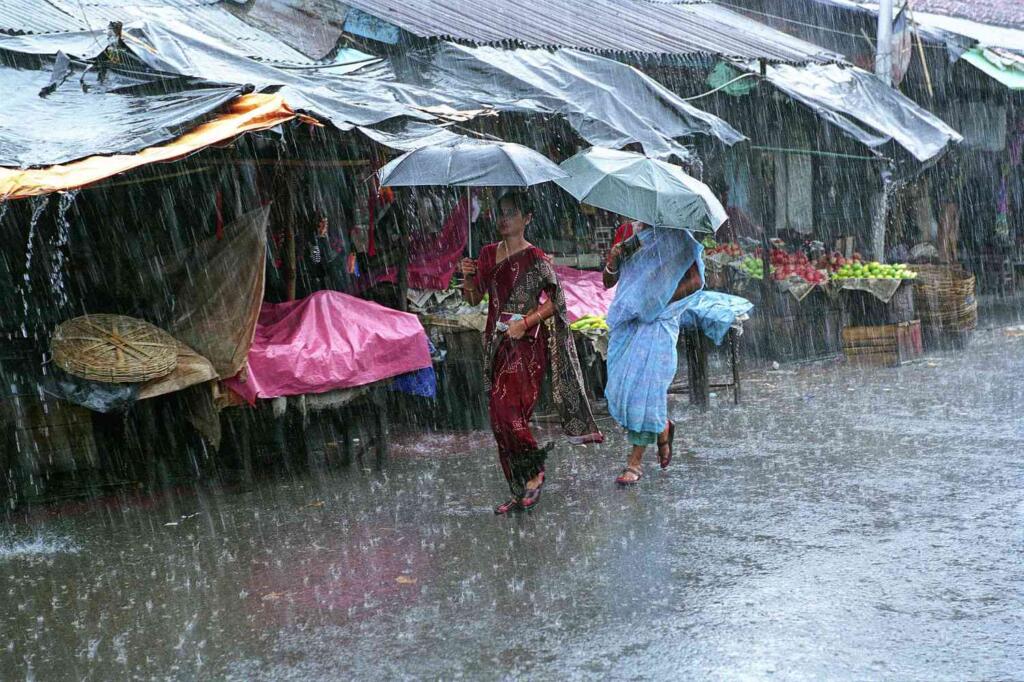The monsoon arrived in Kerala on 30 May, two days before its typical onset, and quickly moved into most parts of Northeast India, as reported by the India Meteorological Department (IMD). Cyclone Remal, which affected West Bengal and Bangladesh on Sunday, redirected the monsoonal flow towards the Bay of Bengal. This shift potentially led to the early monsoon onset over the northeast.
Onset of Monsoon and Its Significance
According to the IMD, the southwest monsoon has set in over Kerala and advanced into most parts of Northeast India as of May 30, 2024. Kerala has experienced heavy rains recently, resulting in surplus May rainfall.
The monsoon onset in Kerala marks the beginning of India’s southwest monsoon season, which lasts from June to September. This period contributes over 70 percent of India’s annual rainfall and is crucial for the country’s economy. The onset of the monsoon indicates a major shift in atmospheric and oceanic patterns across the Indo-Pacific region.
Criteria for Monsoon Announcement
The IMD follows specific criteria, established in 2016, to announce the monsoon onset. These criteria include consistent rainfall across designated areas, sufficient rainfall strength, and prevailing wind velocities. For Kerala, the monsoon onset is confirmed if at least 60 percent of 14 designated stations record 2.5 mm or more rainfall for two consecutive days following May 10. These stations include Minicoy, Amini, Thiruvananthapuram, and several others.
Monsoon Forecast for India
The IMD predicts that the central monsoon region of India will experience above-average rainfall this season. Nationwide, rainfall is expected to be above normal from June to September. The IMD projects the southwest monsoon’s seasonal rainfall to be 106 percent of the long-period average, with a model error margin of plus or minus four percent. IMD Director-General Mrutyunjaya Mohapatra stated that normal rainfall, ranging from 92 to 108 percent of the long-period average of 166.9 mm, is likely in June.
Impact of La Nina on Monsoon
La Nina conditions, expected to develop between July and September, can significantly influence the Indian monsoon, often leading to above-normal rainfall and increased flooding risk. La Nina events cool the sea surface temperatures in the equatorial Pacific Ocean, strengthening trade winds and enhancing rainfall over the western Pacific and parts of Southeast Asia, including India. The Asia-Pacific Economic Cooperation (APEC) Climate Centre also predicts above-normal rainfall during India’s peak monsoon season, attributing this to the anticipated transition from El Nino to La Nina conditions. The IMD’s Monsoon Mission Coupled Forecasting System also indicates potential La Nina development during the monsoon season.
Heatwave in India
Currently, India is experiencing severe heatwave conditions, with temperatures soaring between 44 and 53 degrees Celsius in several regions, including Northwest and Central India. The IMD has issued warnings for severe heatwave conditions in states such as Rajasthan, Punjab, Haryana, Chandigarh, Delhi, and Gujarat. These heatwave conditions are expected to persist until the monsoon onset.
Record Temperatures
Delhi witnessed its highest-ever temperature of 52.3 degrees Celsius on Wednesday, bringing some relief with a light drizzle in the evening. The previous day, Delhi nearly reached 50 degrees Celsius at three of its weather stations: Mungeshpur, Narela, and Najafgarh. On Sunday, Rajasthan’s Phalodi recorded India’s highest temperature at 49.8 degrees Celsius, followed by Delhi’s Mungeshpur at 48.3 degrees Celsius, Jhansi at 47.7 degrees Celsius, and Punjab’s Faridkot at 47.4 degrees Celsius.
Heatwave Criteria
A heatwave is declared when the actual maximum temperature is 45 degrees Celsius or more. For plains, a heatwave is declared if the maximum temperature reaches at least 40 degrees Celsius, for coastal stations, 37 degrees Celsius or more, and for hilly regions, at least 30 degrees Celsius for two or more days.
Conclusion
The early monsoon arrival brings relief from the severe heatwave conditions in India. The expected above-normal rainfall due to the potential La Nina development will be beneficial for agriculture and water resources. However, the current heatwave highlights the need for preparedness and adaptive measures to mitigate the impacts of extreme weather conditions.
ALSO READ: Finding out how much water your body needs
